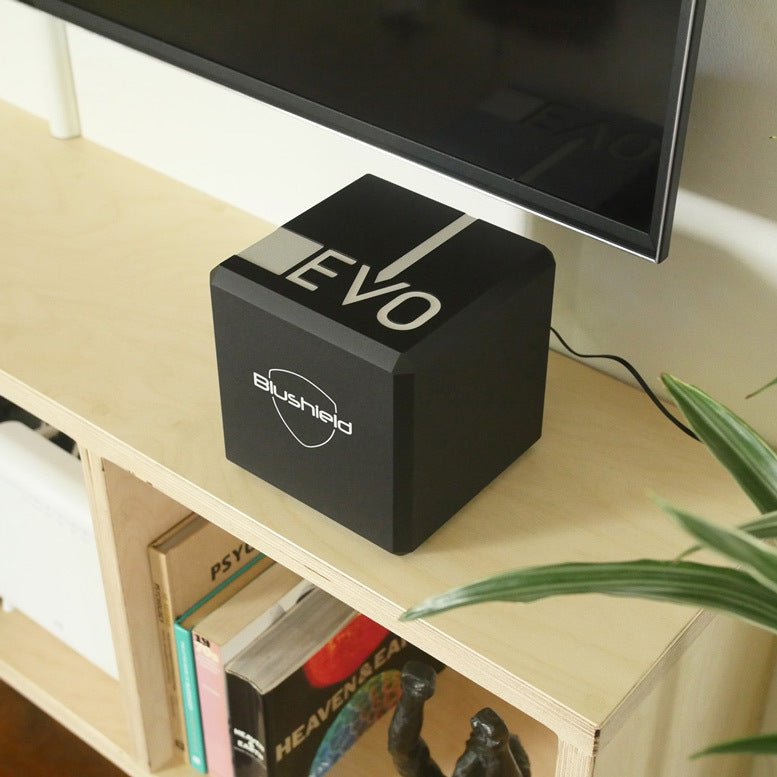In today’s tech-driven world, understanding and mitigating electromagnetic field (EMF) exposure is becoming increasingly important for protecting your overall health. EMFs are everywhere; from our homes to our workplaces; and while modern conveniences make life easier, prolonged exposure may pose potential risks.
In this guide, we’ll break down what EMFs are, their common sources, how they can impact your health, and actionable steps to limit your exposure. We’ll also address frequently asked questions to help you create a safer environment for yourself and your family.
Quick Overview
- What Are EMFs? Energy fields from electronic devices, either low-frequency (appliances) or high-frequency (Wi-Fi, phones).
- Common Sources: Wi-Fi routers, smart devices, household appliances, and air conditioners.
- Health Risks: Disrupted sleep, cognitive issues, and increased stress, with children and pregnant women being more vulnerable.
- Simple Solutions:
- Keep devices at a distance.
- Use wired connections.
- Turn off devices at night.
- Use EMF shielding products.
Keep reading to learn more about EMFs and how to protect your health.
What Are EMFs in Simple Terms?
Electromagnetic fields (EMFs) are invisible energy fields generated by electricity and electronic devices. Essentially, anytime electricity flows, it creates an EMF. These fields come in two primary types:
- Low-Frequency EMFs: Found in everyday electronics like household appliances, power lines, and electrical wiring.
- High-Frequency EMFs: Emitted by wireless devices such as mobile phones, Wi-Fi routers, and microwaves.
While both types of EMFs surround us constantly, the growing prevalence of wireless technology means high-frequency EMFs are becoming a larger part of daily life.
Common Sources of EMF in Australian Homes
Your home is filled with various sources of EMF radiation, including:
- Electrical wiring and outlets: Hidden behind your walls but constantly emitting low-frequency EMFs.
- Wi-Fi routers and modems: Essential for connectivity but a significant source of high-frequency radiation.
- Smart devices: Phones, tablets, smart speakers, and other wireless devices generate continuous EMF.
- Household appliances: Refrigerators, microwaves, televisions, and even LED lights emit EMFs.
- Air conditioners: With motorised systems and high electrical currents, air conditioners can be significant emitters.
To identify the EMF levels in your home, consider using an EMF meter. Learn how to measure EMFs and pinpoint high-exposure areas effectively.
Neurological Signs of EMF Exposure
Prolonged exposure to EMFs has been linked to potential effects on the nervous system. Commonly reported symptoms include:
- Chronic fatigue: A constant feeling of exhaustion.
- Anxiety or irritability: Increased stress or mood swings without an apparent cause.
- Difficulty sleeping or insomnia: Trouble falling or staying asleep, potentially due to melatonin disruption.
- Headaches or migraines: Frequent headaches, particularly after prolonged exposure to devices.
- Memory lapses: Issues with short-term memory or concentration.
While these symptoms are often anecdotal, they highlight the importance of reducing exposure to EMFs in spaces where you spend significant time, such as bedrooms and offices. Addressing EMFs in these areas can improve both your physical and mental well-being.
Practical Tips for Creating an EMF-Safe Home
Reducing EMF exposure in your home doesn’t have to be overwhelming. Small, practical steps can make a significant difference in creating a safer living environment for you and your family.
From maintaining safe distances to using protective materials, here are actionable tips to help minimise EMFs in your home.
- Maintain Safe Distances
- Mobile Devices: Keep phones away from your head and body. Use texting or speaker mode or an AirTube headset during calls instead of holding the device to your ear.
- Wi-Fi Routers: Position routers away from high-use areas like bedrooms or living rooms.
- Use Wired Connections
- Switch to ethernet cables for computers and other devices. Wired connections reduce reliance on high-frequency wireless signals.
- Limit Wireless Device Usage
- Use a stylus for touch screens and minimise direct contact with high-EMF devices like tablets and laptops.
- Implement EMF Protection Products
- Consider active EMF protection devices like Blushield technology that emit natural frequencies to counteract artificial EMFs.
- Measure EMF Levels
- Use tools like the Digital Triaxial Gauss Meter TM192 to assess magnetic field strengths and identify problem areas.
- Shield Sleeping Areas
- Install EMF shielding materials, such as protective blankets or specialised paints, to block radiation in bedrooms.
How to Design an EMF-Free Bedroom
To further protect your sleeping space:
- Use blackout curtains that block radiation from outside sources.
- Position your bed away from electrical outlets and devices.
- Consider a canopy made from EMF-blocking fabric for maximum protection.
Frequently Asked Questions (FAQs) About EMFs
Do Air Conditioners Emit EMFs?
Yes, air conditioners emit EMF radiation due to their electrical and motorised components. The closer you are to the unit, the higher your exposure.
How to Minimise Exposure:
- Position the air conditioner away from bedrooms or workspaces.
- Use an EMF meter to determine safe distances.
- Turn off the unit when not needed.
Does Wi-Fi Emit EMFs?
Yes, Wi-Fi routers and modems emit high-frequency EMF radiation to maintain wireless connectivity. The levels are strongest near the device but decrease with distance.
How to Minimise Exposure:
- Turn off Wi-Fi at night or when not in use.
- Position routers away from common areas like bedrooms or children’s play spaces.
- Use wired connections where possible.
Can Solar Panels Create EMFs?
Yes, solar panels and their inverters generate low-frequency EMFs due to the electrical current they produce. While emissions are generally low, inverters can create concentrated EMF hotspots. Placing inverters away from living spaces can help reduce exposure.
What Are Natural vs. Artificial EMFs?
Natural EMFs are generated by the Earth and are essential for life. Artificial EMFs, on the other hand, come from human-made devices like electronics and wireless systems. Artificial EMFs can sometimes disrupt the body’s natural electrical systems.
How Does EMF Impact the Brain?
Prolonged EMF exposure has been linked to several potential effects on brain activity, including:
- Increased Oxidative Stress: This can lead to inflammation and cellular damage.
- Disrupted Sleep Cycles: EMFs may interfere with melatonin production, which regulates sleep.
- Cognitive Impacts: Some individuals report headaches, memory issues, and difficulty concentrating.
Can EMFs Affect Children Differently?
Children may be more susceptible to EMF exposure due to their developing bodies and thinner skulls, which absorb radiation more readily. Limiting children’s use of wireless devices and ensuring they sleep away from high-EMF areas can help protect them.
Are EMFs Harmful During Pregnancy?
Pregnant women are often advised to limit EMF exposure due to potential risks to the developing foetus. Keeping devices like mobile phones and laptops away from the abdomen and using EMF-blocking products can help mitigate risks.
What Materials Can Block EMFs?
Certain materials are highly effective at reducing EMF exposure, including:
- Metals like copper, aluminium, and steel.
- Specialised fabrics designed for shielding, such as EMF-blocking clothing.
- Carbon-based paints to shield walls.
- Earthing products that redirect harmful EMFs away from the body.
Conclusion
Electromagnetic fields are an unavoidable part of modern life, but understanding their sources and potential health impacts can empower you to take action.
By identifying EMF hotspots in your home and implementing strategies like using wired connections, shielding materials, and protection devices, you can create a safer environment for your family.
Ready to take the next step? Explore our EMF protection products and resources to start reducing exposure today. Your health and well-being are worth it!










